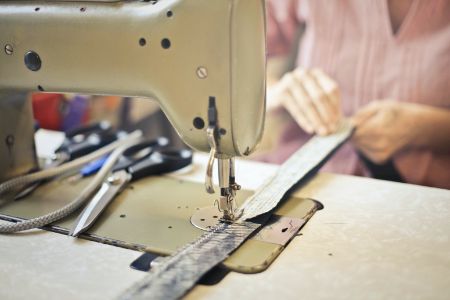Before you start a Cross-stitch project, it is important to choose the right thread. Usually, you’ll
be working with a single strand doubled in the needle. Then, pass your needle through the loop
on the one end and work your way through the stitch. Repeat for the remaining arms of the
pattern. You will eventually reach the end. There are many different ways to finish a Crosstitch
project. Here are a few examples.
First, place the needle in the lower left corner of the fabric. Place the needle in upper right
corner. Repeat the process in the opposite direction. Make the next row by bringing your needle
back through the previous point (called “D”). You’ll need the same process for the last row.
Repeat the steps until you’ve completed the chart. You will now have a complete row cross-
stitch.
Once you have a fabric, you will need to choose a yarn. Cross stitch patterns usually include a
thread count chart. This will allow you to determine how many skeins of the desired color are
required for your design. You will also need to identify a center point on your fabric. The fabric’s
centre is generally where the folds meet. This can be marked using a Water Soluble Pen. Finally,
every cross stitch chart will specify the finished size of the design. The stitcher should leave
about 8cm (3″) of framing around the design area, unless the project calls for a larger frame.
Cross stitch patterns are very trendy today. Cross stitch patterns are no longer used to decorate
clothes or homes. They have become a leisurely pastime for the upper classes. The fashionable
designs of today often include retro images and contemporary sayings to reflect a modern
lifestyle and encourage a positive outlook. Cross stitch patterns are constantly evolving with the
influx of new designs. There are many ways to create a cross stitch pattern that is unique.
A half-cross stitch is a series made by passing the needle directly below the last stitch. The first
half of the cross stitch is done. You can make another half-cross stitch by repeating the process
with the second half. In this instance, you have completed a cross-stitch. You may find some
designs easier to make in complete, and it is usually easier than just making individual stitches.
For an example, see the diagram below.
Counted crossing stitching is the process of reproducing a design on a fabric with a counting
method. The process usually involves dozens, even thousands of stitches. The design chart
shows symbols representing the locations where the stitches should be made, and each symbol
represents a different color thread. The cross stitch itself is a double stitch that crosses the
intersection of two horizontal and vertical threads. This technique is used often to embroider
words and mottos.
A cross stitch pattern contains all the information you need to make a stitch. It also contains a
“color guide” that shows you the different colours in a given pattern. These symbols match up
with squares on the Aida fabric. The grid lines are usually darker that the pattern, making it
easier read and to count stitches. A cross stitch pattern chart will help you create the most
beautiful cross stitch. It is the best way to learn cross stitch.
Cross stitch charts should be drawn starting in the middle. This will ensure that your design is
centered on your fabric. Charts often include small arrows at the edges that indicate where the
center points are. It may be easier to start with large blocks of color if you have a chart that doesn’t have center points. This will ensure that the stitch pattern is consistent for you to follow.
Consider using a larger chart if you are working with large-scale projects.
Needlework is another type of cross stitch. Cross stitch needles are smaller than other types of
embroidery. These needlework designs are typically embroidered on a fabric with a woven
pattern of threads. You can create intricate scenes or small motifs as you stitch. Beginner cross
stitch kits will give you the necessary tools to get started. You can learn the technique by reading
a book or using a kit.
